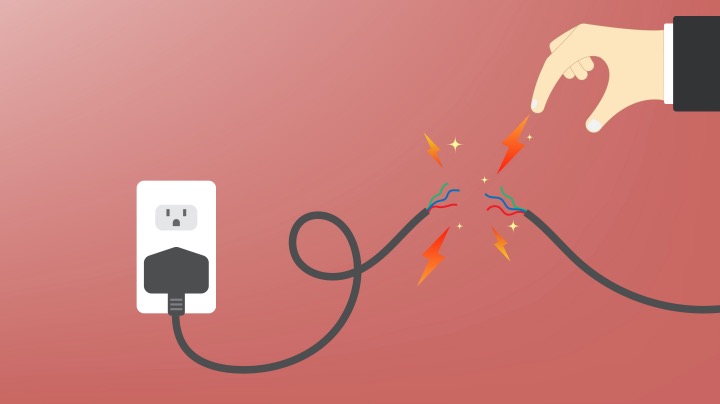Advanced technical support for electrical industry to drive success.
Wiki Article
Top Tips for Effective Electrical System Troubleshooting
Fixing electrical systems needs a systematic strategy, grounded in an extensive understanding of electrical concepts and safety and security procedures. The nuances of reliable troubleshooting extend beyond plain technological expertise; comprehending exactly how to document searchings for and focus on safety can significantly affect outcomes.Understand the Essentials
Recognizing the basics of electric systems is essential for reliable troubleshooting, as a solid structure enables specialists to diagnose and deal with issues extra effectively. A comprehensive understanding of electrical principles, such as voltage, current, resistance, and power, is crucial in identifying the origin of issues. Voltage is the electrical possible difference that drives current via a circuit, while resistance opposes the circulation of present, impacting the general capability of the system.Familiarity with circuit components, including resistors, capacitors, diodes, and changes, is additionally paramount. Each element plays a distinctive function in circuit actions and can influence efficiency when malfunctioning. Additionally, comprehending series and identical circuit configurations is important, as these plans affect the distribution of voltage and present within the system.
In addition, expertise of security methods is important. Service technicians have to know potential hazards, such as shock and short circuits, to carry out secure troubleshooting practices. By mastering these foundational principles, technicians boost their ability to conduct effective diagnostics and repairs, ultimately leading to boosted efficiency and integrity of electrical systems. This fundamental expertise is the keystone of effective repairing ventures.
Gather Necessary Devices
Effective troubleshooting of electric systems calls for the ideal collection of devices to diagnose and resolve concerns properly. A well-appointed professional can significantly improve effectiveness and effectiveness in identifying troubles. Necessary tools consist of a multimeter, which measures voltage, current, and resistance, allowing for specific assessments of electrical elements. Clamp meters are additionally valuable for gauging existing without detaching the circuit, guaranteeing safety and security and comfort.Additionally, shielded hand tools such as screwdrivers, pliers, and cord strippers are critical for safely adjusting electrical connections. It is likewise recommended to have a circuit tester accessible to verify the existence of voltage in electrical outlets and cables. For even more complex systems, a thermal imaging electronic camera can assist find overheating parts, showing potential failings.

Comply With a Methodical Technique
Having gathered the ideal tools, the next action in troubleshooting electric systems is to adhere to a methodical technique. A systematic approach ensures that technicians can identify faults efficiently and properly, decreasing downtime and preventing unneeded repair services.Begin by reviewing the system's schematic layouts and specs. This involves monitoring each component systematically, starting from the power resource and working in the direction of the load.
Make use of testing devices, such as multimeters and oscilloscopes, to gather objective information about voltage, existing, and resistance at different points within the system. This empirical proof will assist your troubleshooting efforts and assist to validate or remove prospective reasons for failure.
In addition, consider environmental factors that may affect the system's performance, such as temperature level variations or wetness ingress. A thorough assessment of wiring, links, and components will make certain that all possibilities are represented.
Document Your Findings
Extensive paperwork is necessary in the repairing his explanation procedure of electric systems. This technique not just help in understanding the root cause of the issue yet likewise serves as a recommendation for future fixing initiatives.
In addition, preserving a log of parts replaced or repairs executed is very useful. This details sustains supply monitoring and can assist assess the long life and dependability of specific parts.
Eventually, the documentation procedure ought to be comprehensive yet succinct, enabling very easy access and review - electrical system troubleshooting. By focusing on in-depth documents, technicians can develop a useful data base that not only help in current troubleshooting however likewise empowers future maintenance efforts, consequently boosting overall system integrity

Prioritize Safety Actions
Recognizing the inherent dangers related to electric systems is vital for guaranteeing safety and security throughout troubleshooting. Electric shock, burns, and equipment damages are just a few of the possible hazards that professionals face. Prioritizing safety and security steps is not just a lawful responsibility yet also an ethical imperative that safeguards both the professional and the surrounding environment.Before commencing any type of troubleshooting job, specialists must wear appropriate personal safety tools (PPE), consisting of insulated gloves, shatterproof glass, and flame-resistant clothing. Making sure that the workplace is completely dry and devoid of clutter can considerably reduce the risk of mishaps. It is vital to de-energize circuits before beginning any work, confirming that they are not my latest blog post live with the usage of a multimeter or voltage tester.
Developing clear communication protocols with staff member is also crucial; this ensures that everyone recognizes potential dangers and the condition of the electrical system being worked on. Having an emergency response strategy in place can prove invaluable in the event of an event. By prioritizing precaution, specialists can efficiently reduce risks and cultivate a safer work environment.
Verdict
Effective electrical system repairing relies upon a thorough navigate here understanding of essential principles and a systematic technique. By collecting vital tools, sticking to systematic analysis strategies, and thoroughly documenting searchings for, the fixing process comes to be much more reliable and trustworthy. Prioritizing precaution guarantees the health of individuals entailed and the stability of the electric system. Executing these strategies will certainly enhance the fixing experience, leading to quicker resolutions and enhanced functional efficiency in electric systems.Report this wiki page